Abstract
In the Republic of Korea, light-trap assessments and collections from cows and pigs after sunset were highly successful in monitoring the seasonal abundance of C. tritaeniorhynchus, the primary vector of Japanese encephalitis. The dates and duration of the population peaks at semirural suburbs of Seoul and Pusan were markedly different from those at a rural rice-growing site. The main breeding sites in these three areas were, respectively, swamps, marshes, and ricefields. The overall adult densities were the lowest at the rice-growing site where agricultural pesticides were extensively used. A short period of man—vector contact occurred at each study site at low densities when the natural population was at its peak. These vector monitoring techniques, coupled with information on antibodies in swine, represent a simple but valuable surveillance system.
Full text
PDF
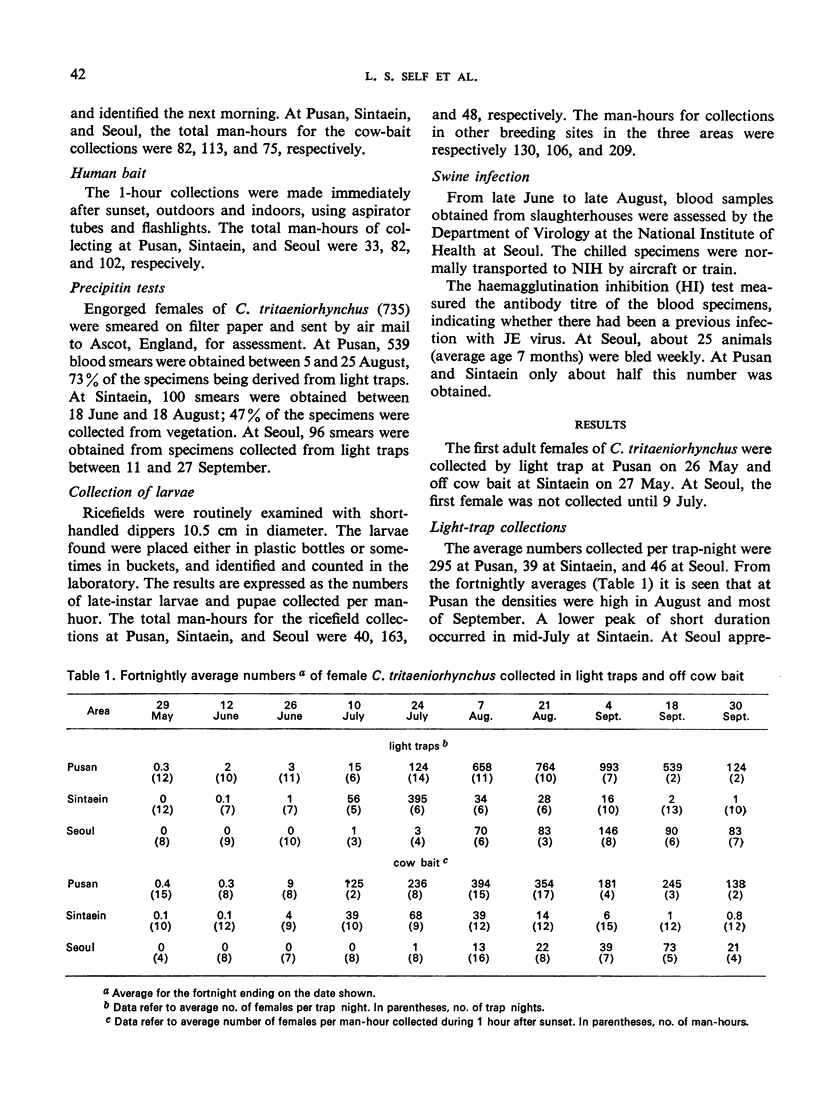

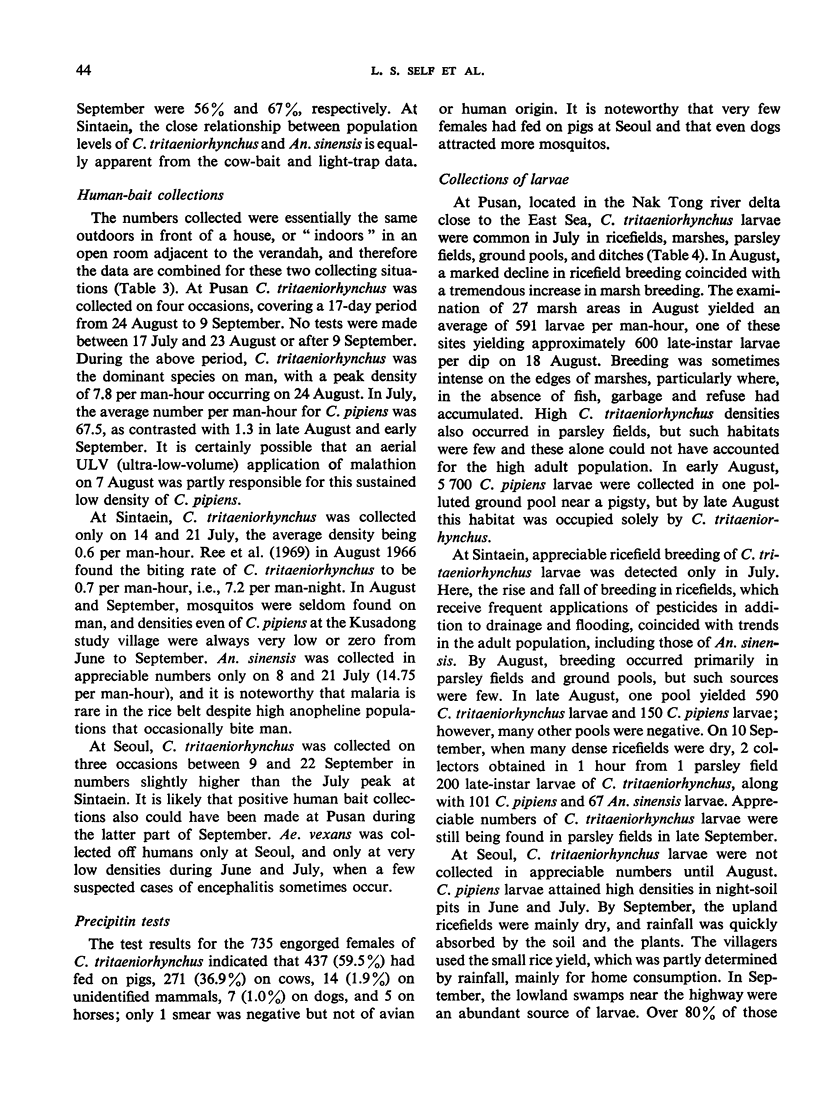
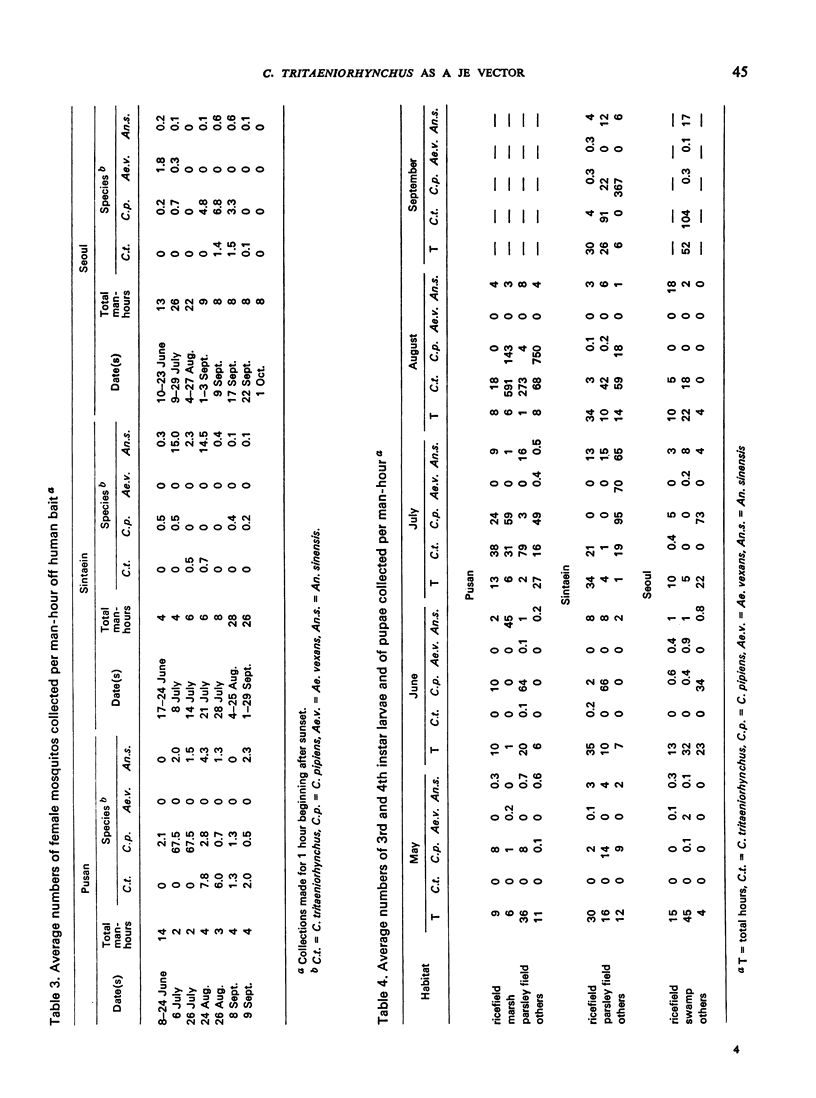
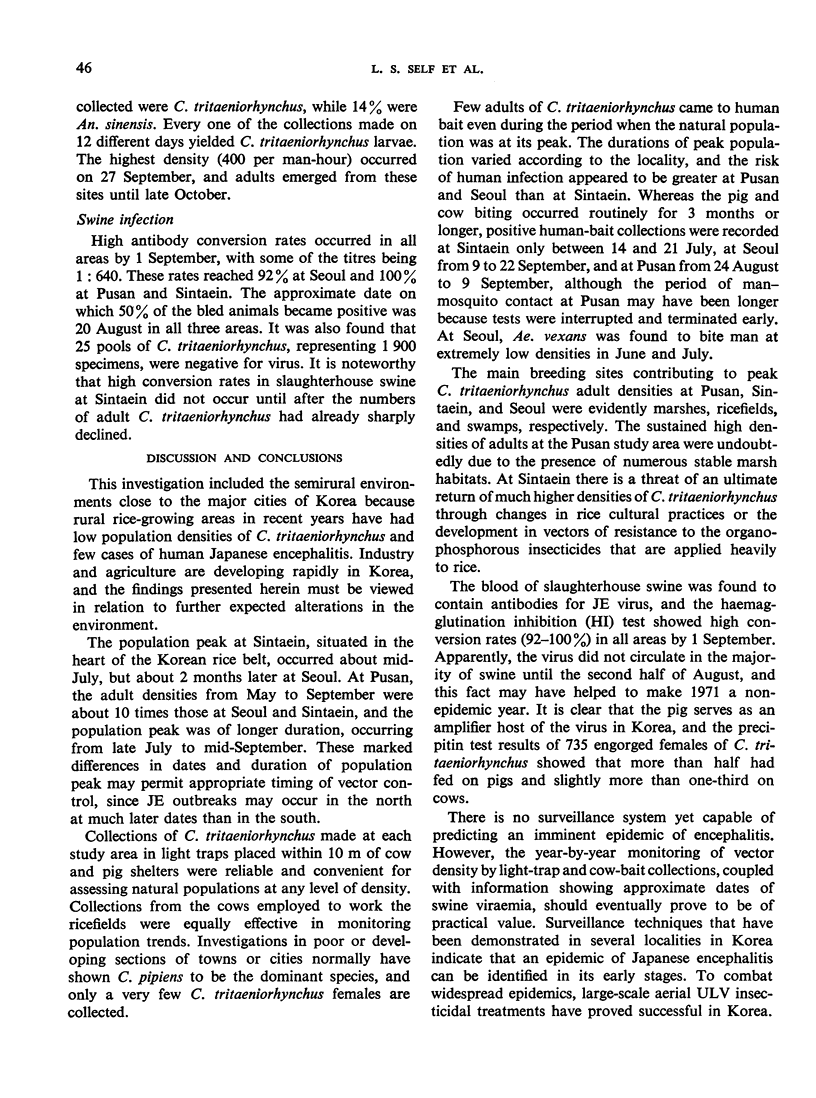
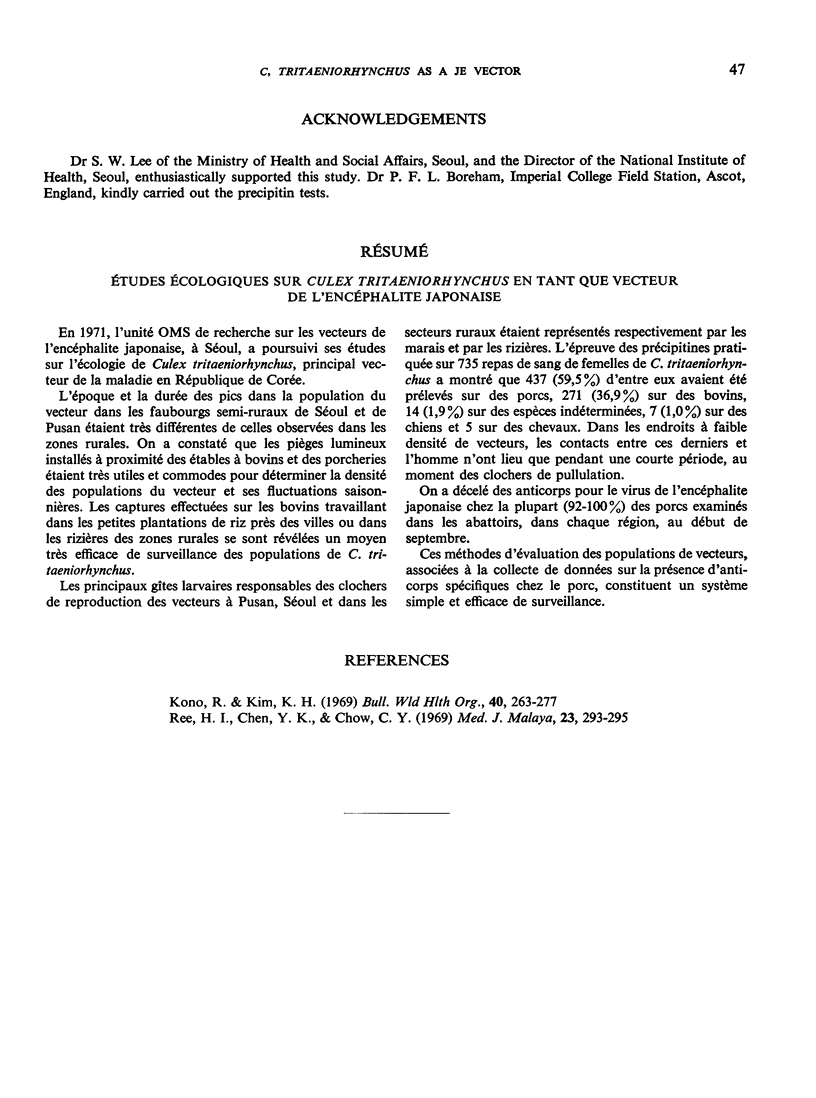
Selected References
These references are in PubMed. This may not be the complete list of references from this article.
- Kono R., Kim K. H. Comparative epidemiological features of Japanese encephalitis in the Republic of Korea, China (Taiwan) and Japan. Bull World Health Organ. 1969;40(2):263–277. [PMC free article] [PubMed] [Google Scholar]
- Ree H. I., Chen Y. K., Chow C. Y. Methods of sampling population of the Japanese encephalitis vector mosquitoes. A preliminary report. Med J Malaya. 1969 Jun;23(4):293–295. [PubMed] [Google Scholar]


